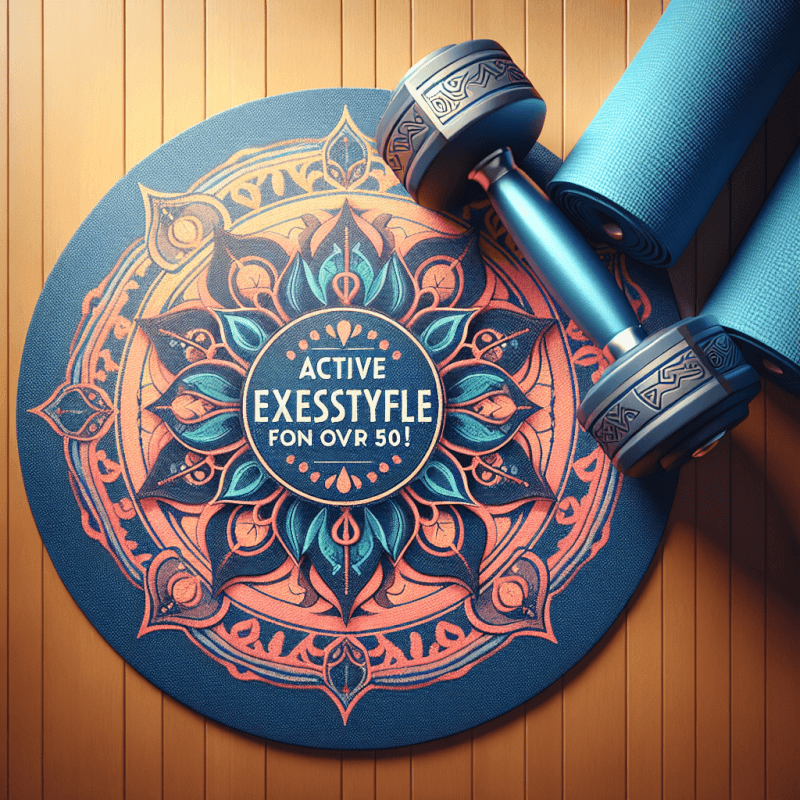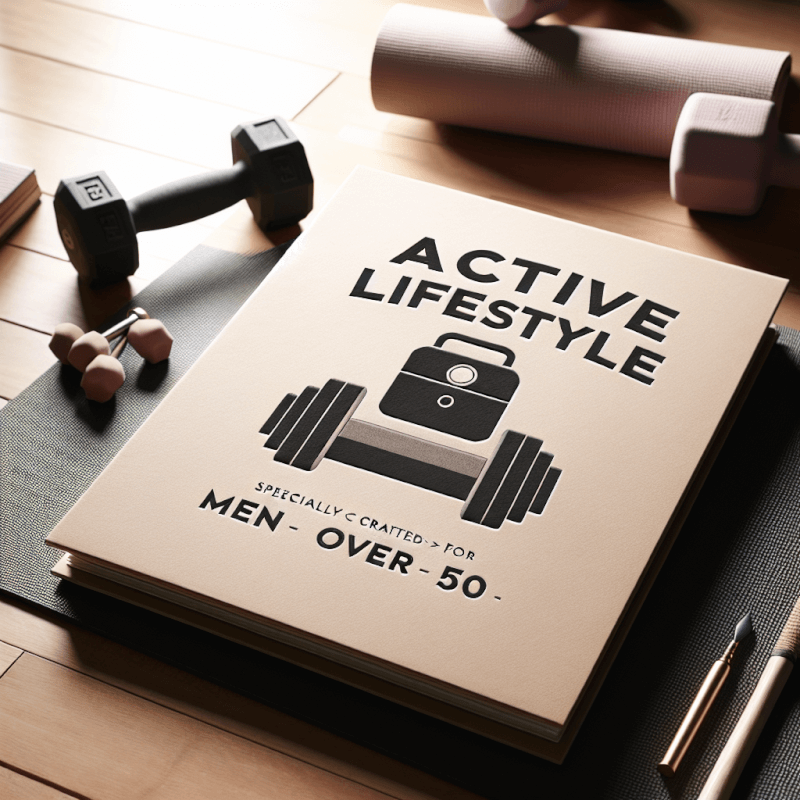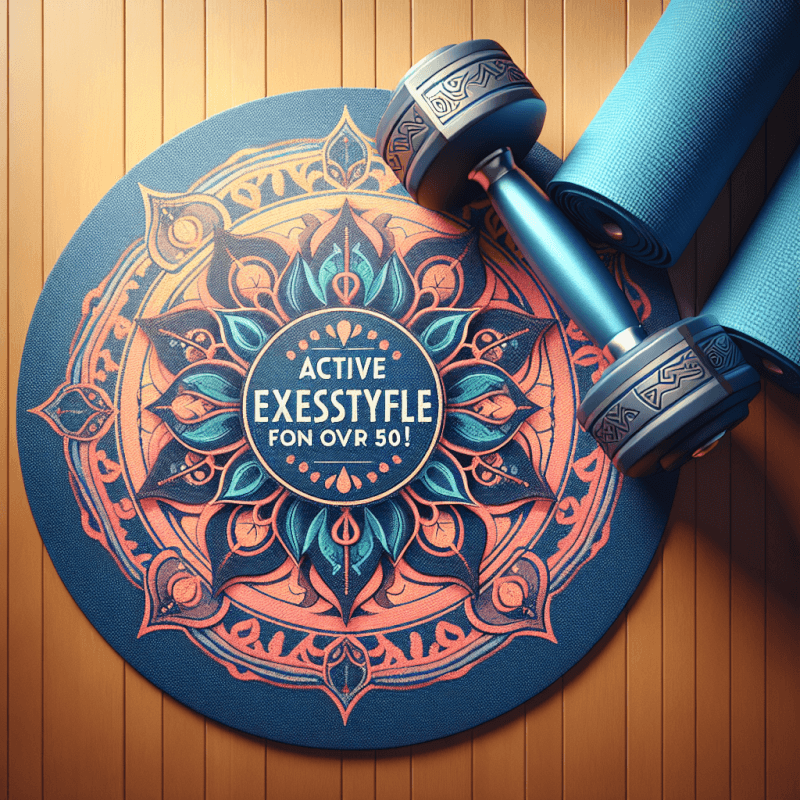Are you a gentleman in his 50s looking for effective ways to stay fit and active right from the comfort of your own home? Look no further, because this article is specifically tailored for you! Here, you will discover a plethora of engaging exercises that are not only suitable for individuals over the age of 50, but can also be easily incorporated into your daily routine. From strength training exercises to cardiovascular workouts, we’ve got you covered. So, put on your workout gear, grab a bottle of water, and get ready to embark on a fitness journey that will leave you feeling rejuvenated and invigorated. Let’s dive in!
Benefits of Exercise for Over 50 Males
Physical Benefits
Regular exercise offers numerous physical benefits for males over the age of 50. Engaging in exercise can help improve cardiovascular health, increase endurance, and strengthen muscles. Exercise also promotes weight management, which is especially important as metabolism tends to slow down with age. Physical activity can reduce the risk of developing conditions such as obesity, high blood pressure, and type 2 diabetes. It also helps to maintain bone density and joint flexibility, decreasing the likelihood of falls and fractures.
Mental Benefits
Exercise not only benefits the body, but it also has remarkable effects on mental health. Engaging in physical activity releases endorphins, which are natural mood enhancers. Regular exercise can help alleviate symptoms of anxiety and depression, improve sleep quality, and boost self-confidence. Exercise also enhances cognitive function, including memory, attention, and problem-solving skills. Over 50 males who exercise often report feeling more energized, focused, and mentally sharp.
Reduced Risk of Chronic Diseases
One of the most significant benefits of exercise for over 50 males is the reduced risk of developing chronic diseases. Engaging in regular physical activity can lower the risk of heart disease, stroke, certain types of cancer, and osteoporosis. Exercise also helps to manage and control existing chronic conditions, such as arthritis and high blood pressure. By maintaining an active lifestyle, over 50 males can enhance their overall health and well-being, leading to a longer and more fulfilling life.
Types of Exercise for Over 50 Males
When designing an exercise routine for males over the age of 50, it is essential to incorporate a variety of exercises that target cardiovascular health, strength, flexibility, and balance. Here are three categories of exercises that are particularly beneficial for this age group:
Cardiovascular Exercises
Cardiovascular exercises are activities that elevate the heart rate, increase lung capacity, and improve overall circulation. They are particularly effective in improving cardiovascular health and promoting weight loss. Some popular cardiovascular exercises for over 50 males include brisk walking, cycling, and swimming.
Strength Training Exercises
Strength training exercises are vital for building and maintaining muscle mass, which naturally decreases with age. These exercises can help improve balance, decrease the risk of falls, and increase bone density. Bodyweight exercises, weightlifting, and resistance band exercises are excellent choices for over 50 males looking to improve their strength and muscle tone.
Flexibility and Balance Exercises
Flexibility and balance exercises are essential for maintaining joint mobility, preventing injuries, and enhancing overall flexibility. They also help improve posture and stability. Yoga, Tai Chi, and Pilates are popular choices for over 50 males looking to improve their flexibility and balance.

Cardiovascular Exercises
Brisk Walking
Brisk walking is a low-impact exercise that offers numerous benefits for over 50 males. It can be easily incorporated into daily routines, doesn’t require any special equipment, and can be done both indoors and outdoors. Walking briskly for at least 30 minutes a day can help improve cardiovascular health, burn calories, and strengthen leg muscles. It’s a great exercise for those who are just starting to get back into fitness or prefer gentler forms of exercise.
Cycling
Cycling is another excellent cardiovascular exercise for over 50 males. It is a low-impact activity that is gentle on the joints while still providing an effective aerobic workout. Cycling can be done outdoors or indoors on a stationary bike. It helps improve cardiovascular endurance, strengthen leg muscles, and burn calories. It’s an enjoyable and engaging form of exercise that can be done alone or with friends and family.
Swimming
Swimming is a fantastic exercise option for over 50 males, particularly for those with joint issues or mobility limitations. Swimming is a low-impact activity that provides a full-body workout. It helps improve cardiovascular fitness, strengthens muscles, and increases flexibility. Swimming also helps alleviate stress on joints and offers a refreshing and enjoyable form of exercise. Whether swimming laps, participating in water aerobics, or simply leisurely swimming, it provides a great way to stay active and fit.
Strength Training Exercises
Bodyweight Exercises
Bodyweight exercises are an efficient way for over 50 males to build and maintain muscle strength without the need for specialized equipment. Push-ups, squats, lunges, planks, and chair dips are examples of bodyweight exercises that can be done at home. These exercises engage multiple muscle groups and help improve overall strength, coordination, and balance. Additionally, bodyweight exercises can be modified to suit different fitness levels, making them accessible to individuals of all abilities.
Weightlifting
Weightlifting is an excellent way for over 50 males to increase muscle mass, improve bone density, and enhance strength and power. It can be done using dumbbells, barbells, or weight machines. Engaging in weightlifting exercises such as bicep curls, shoulder presses, and deadlifts helps target specific muscle groups, resulting in improved muscular strength and tone. However, it is important to start with lighter weights and gradually increase the intensity to avoid injury. Seeking guidance from a qualified trainer is recommended to ensure proper form and technique.
Resistance Band Exercises
Resistance band exercises are a convenient and versatile option for over 50 males looking to strengthen their muscles without the need for heavyweights. Resistance bands are portable, lightweight, and can be easily incorporated into various exercises. They provide an effective resistance that challenges muscles and helps maintain or build strength. Exercises such as bicep curls, lateral raises, and seated rows can be done using resistance bands. These exercises improve muscular endurance, stability, and flexibility.

Flexibility and Balance Exercises
Yoga
Yoga is a holistic exercise practice that focuses on mental and physical well-being. It involves a series of postures, breathing exercises, and meditation. Yoga helps improve flexibility, balance, and posture, while also reducing stress and promoting relaxation. It is a gentle and low-impact exercise option suitable for over 50 males of all fitness levels. Yoga classes specifically designed for seniors may offer modified poses and modifications to accommodate individual needs and limitations.
Tai Chi
Tai Chi is a traditional Chinese martial art that combines slow, deliberate movements with deep breathing and mental focus. It is a highly accessible exercise option for over 50 males, as it is low impact and can be adapted to different fitness levels. Tai Chi improves balance, flexibility, coordination, and muscular strength while promoting relaxation and mindfulness. Participating in Tai Chi classes or following instructional videos can provide a complete mind-body workout that leaves you feeling refreshed and centered.
Pilates
Pilates is a low-impact exercise method that focuses on developing core strength, flexibility, and overall body control. It involves a series of precise movements and exercises that target specific muscle groups, particularly the abdominal muscles. Pilates can be done using a mat or with specialized equipment such as a reformer or stability ball. It helps improve posture, stability, and alignment, making it an excellent choice for over 50 males looking to enhance their physical strength and body awareness.
Setting Up a Home Workout Space
When it comes to exercising at home, having a dedicated space can help create a conducive environment for working out. Here are some steps to set up a home workout space for over 50 males:
Dedicated Room or Area
Designate a specific room or area in your home where you can exercise comfortably without interruptions. This could be a spare bedroom, basement, or even a corner of the living room. Having a dedicated space helps create a mental and physical boundary for your workout, enhancing focus and motivation.
Equipment and Accessories
Consider the types of exercises you enjoy and the equipment required to perform them. This could include items such as dumbbells, resistance bands, a yoga mat, a stationary bike, or a treadmill. Choose equipment that aligns with your fitness goals and space availability. Additionally, accessories such as workout attire, water bottles, and a mirror can help enhance your workout experience.
Safety Considerations
Ensure the workout space is well-lit and has appropriate ventilation. Remove any obstacles or hazards that could cause accidents or injuries. If using heavy equipment, make sure it is stable and securely positioned. Consider installing safety features such as handrails or grab bars if needed. Also, make sure to consult with a healthcare professional before starting any new exercise routine to ensure it is safe for you.

Creating an Exercise Routine
Developing a structured exercise routine is crucial for consistency and long-term progress. Here are some key steps to consider when creating an exercise routine for over 50 males:
Consulting a Doctor
Before starting a new exercise routine, it is always advisable to consult with a healthcare professional, especially if you have any pre-existing health conditions or concerns. A doctor can provide personalized advice and recommendations based on your specific needs.
Setting Realistic Goals
Set realistic and achievable goals that align with your fitness level and lifestyle. This could include goals such as improving cardiovascular fitness, losing weight, increasing muscle strength, or simply maintaining overall health and well-being. Breaking down larger goals into smaller, manageable milestones can help you stay motivated and track your progress.
Choosing Appropriate Exercises
Select exercises that target different aspects of fitness, including cardiovascular health, strength, flexibility, and balance. Consider the exercises outlined in the previous sections and choose ones that you enjoy and are suitable for your fitness level. It’s important to have a well-rounded routine that includes a mix of cardiovascular, strength training, flexibility, and balance exercises.
Scheduling and Progression
Set aside dedicated time for exercise in your daily or weekly schedule. Consistency is key to achieving long-term results. Start with shorter workout sessions and gradually increase the duration and intensity as your fitness level improves. Additionally, incorporate rest days and recovery periods into your routine to prevent overexertion and reduce the risk of injury.
Safety Tips for Over 50 Males
When engaging in exercise, safety should always be a top priority. Here are some important safety tips for over 50 males:
Warming Up and Cooling Down
Before starting any exercise session, warm up your muscles with gentle movements and stretching to increase blood flow and flexibility. Similarly, after exercising, cool down with light stretching or a short walk to help prevent muscle soreness and aid in recovery.
Proper Form and Technique
Perform exercises with proper form and technique to minimize the risk of injury. If you’re unsure about how to perform an exercise correctly, consider seeking guidance from a qualified trainer or watching instructional videos. Practice good posture and alignment during exercises to maintain the integrity of your muscles and joints.
Avoiding Overexertion
Listen to your body and avoid pushing yourself too hard, especially if you’re just starting out or haven’t exercised for a while. Gradually increase the duration and intensity of your workouts to prevent overexertion and allow your body to adapt. If you experience severe pain, dizziness, or shortness of breath during exercise, stop immediately and seek medical attention if necessary.
Listening to Your Body
Pay attention to any discomfort or pain during exercise and modify or stop the activity if needed. It’s important to distinguish between muscle soreness and pain associated with an injury. If you’re unsure, consult with a healthcare professional to ensure proper diagnosis and treatment.

Motivation and Staying Consistent
Maintaining motivation and consistency is essential for long-term success. Here are some tips to help you stay motivated and committed to your exercise routine:
Find an Exercise Buddy or Group
Exercising with a partner or joining a fitness group can provide a sense of accountability and motivation. Having someone to exercise with can make workouts more enjoyable and provide social support. Consider joining local fitness classes, engaging in team sports, or finding a workout buddy who shares similar goals.
Setting Rewards and Milestones
Reward yourself for reaching milestones or achieving specific goals. Celebrating your progress can help instill a sense of accomplishment and motivate you to keep going. Treat yourself to a favorite meal, purchase new workout gear, or indulge in a relaxing massage. Setting smaller, achievable goals along the way can also help maintain enthusiasm and track progress.
Tracking Progress
Keep a record of your workouts, measurements, and achievements. Tracking your progress can provide a visual representation of your improvement, serving as a source of motivation and inspiration. Whether it’s through a fitness journal, mobile app, or smart device, find a method that works for you and allows you to monitor your progress over time.
Maintaining a Positive Mindset
Maintaining a positive mindset is crucial for staying motivated and enjoying the process of exercise. Focus on the benefits of physical activity and how it contributes to your overall health and well-being. Surround yourself with positive influences, whether it’s motivational quotes, uplifting music, or inspirational role models. Embrace setbacks as learning opportunities and approach each workout with a positive attitude.
Conclusion
Exercise plays a vital role in the health and well-being of over 50 males. By incorporating a variety of cardiovascular, strength training, flexibility, and balance exercises into their routine, males over 50 can enjoy numerous physical and mental benefits. Setting up a home workout space, consulting a healthcare professional, and following safety guidelines are essential for a safe and effective exercise routine. With motivation, consistency, and a positive mindset, over 50 males can maintain an active and fulfilling lifestyle for years to come.



